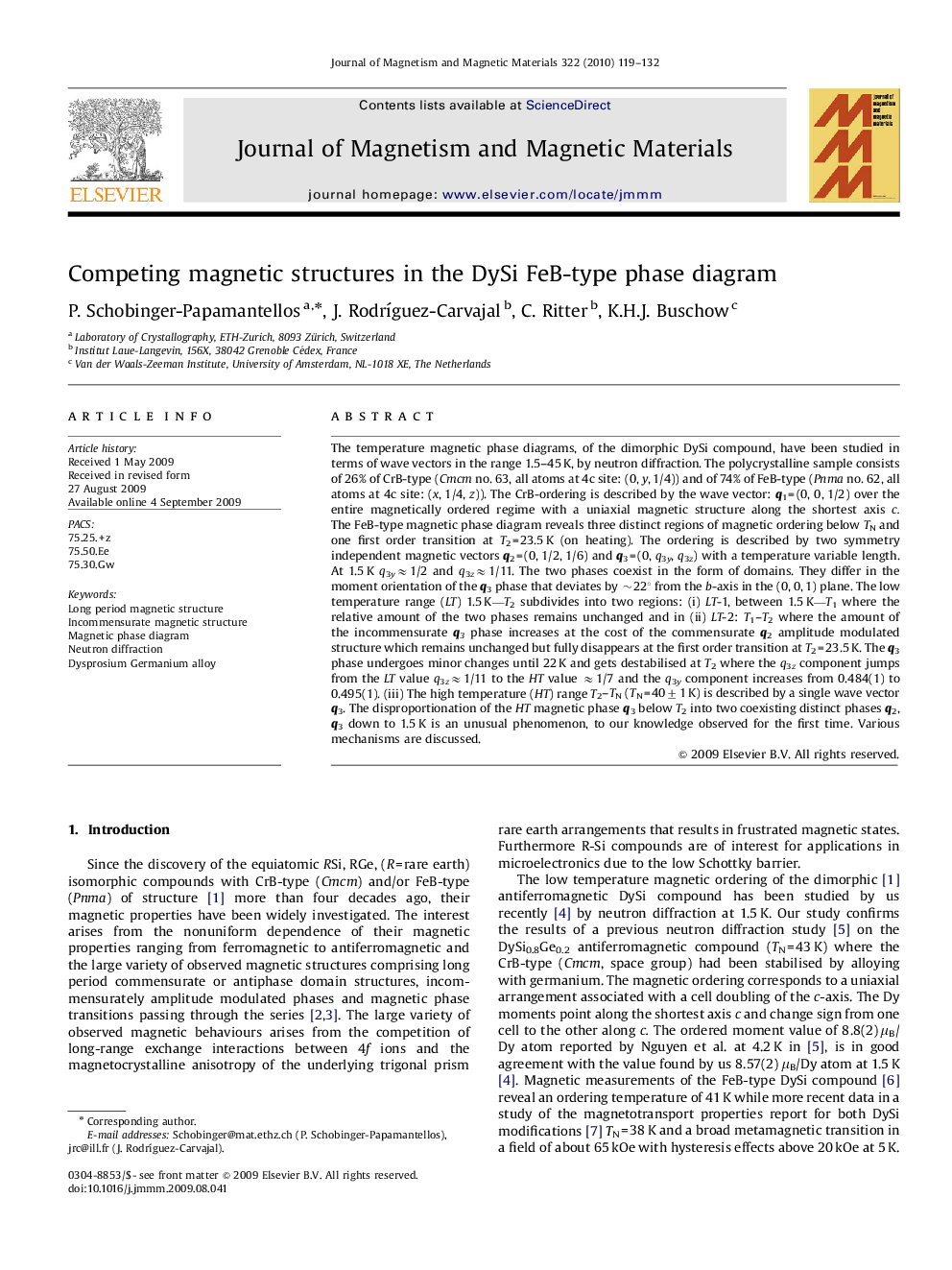| Article ID | Journal | Published Year | Pages | File Type |
|---|---|---|---|---|
| 1800928 | Journal of Magnetism and Magnetic Materials | 2010 | 14 Pages |
Abstract
The temperature magnetic phase diagrams, of the dimorphic DySi compound, have been studied in terms of wave vectors in the range 1.5-45 K, by neutron diffraction. The polycrystalline sample consists of 26% of CrB-type (Cmcm no. 63, all atoms at 4c site: (0, y, 1/4)) and of 74% of FeB-type (Pnma no. 62, all atoms at 4c site: (x, 1/4, z)). The CrB-ordering is described by the wave vector: q1=(0, 0, 1/2) over the entire magnetically ordered regime with a uniaxial magnetic structure along the shortest axis c. The FeB-type magnetic phase diagram reveals three distinct regions of magnetic ordering below TN and one first order transition at T2=23.5 K (on heating). The ordering is described by two symmetry independent magnetic vectors q2=(0, 1/2, 1/6) and q3=(0, q3y, q3z) with a temperature variable length. At 1.5 K q3yâ1/2 and q3zâ1/11. The two phases coexist in the form of domains. They differ in the moment orientation of the q3 phase that deviates by â¼22° from the b-axis in the (0, 0, 1) plane. The low temperature range (LT) 1.5 K-T2 subdivides into two regions: (i) LT-1, between 1.5 K-T1 where the relative amount of the two phases remains unchanged and in (ii) LT-2: T1-T2 where the amount of the incommensurate q3 phase increases at the cost of the commensurate q2 amplitude modulated structure which remains unchanged but fully disappears at the first order transition at T2=23.5 K. The q3 phase undergoes minor changes until 22 K and gets destabilised at T2 where the q3z component jumps from the LT value q3zâ1/11 to the HT value â1/7 and the q3y component increases from 0.484(1) to 0.495(1). (iii) The high temperature (HT) range T2-TN (TN=40±1 K) is described by a single wave vector q3. The disproportionation of the HT magnetic phase q3 below T2 into two coexisting distinct phases q2, q3 down to 1.5 K is an unusual phenomenon, to our knowledge observed for the first time. Various mechanisms are discussed.
Keywords
Related Topics
Physical Sciences and Engineering
Physics and Astronomy
Condensed Matter Physics
Authors
P. Schobinger-Papamantellos, J. RodrÃguez-Carvajal, C. Ritter, K.H.J. Buschow,
